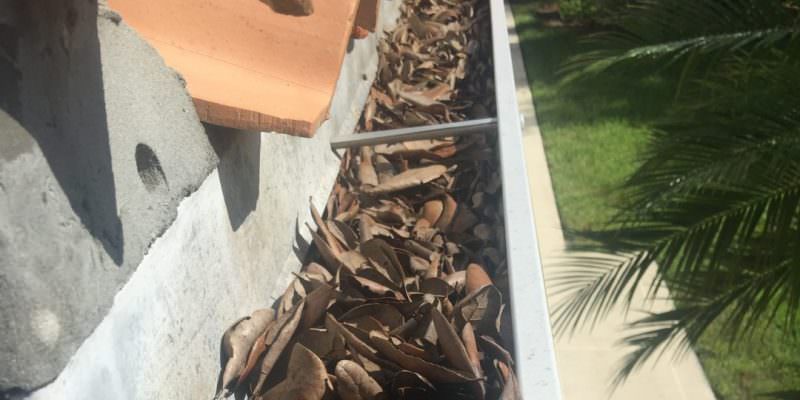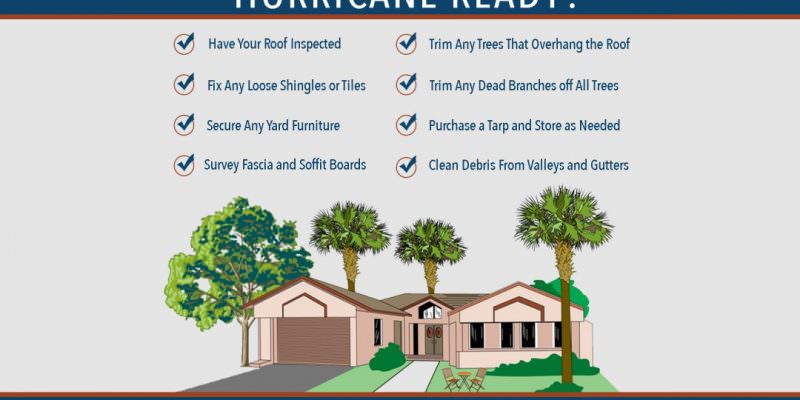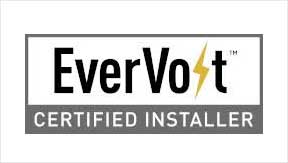Your roof is something you tend not to think about until you need a new one- but choosing a new roof is a very important process, one that can come with many advantages or disadvantages. Most homeowners are unaware of the many types of roofs that they have to choose from. We invite you to take a journey with us to explore the many shingle options that are available. Shingles can be made of asphalt, wood, metal, slate, or even concrete tile.
Top Ten Mistakes in Purchasing a New Roof
A roof that’s installed with modern materials and methods and then properly maintained will give you many years of hassle-free service. However, if you live in an older home or one that has been damaged by storm or neglect, it may be time to consider installing an entirely new roof.
But as with so many other large purchases, buying a new roof can be a costly and frustrating experience- especially if you don’t avoid making some of the missteps as so many other homeowners have. To help you avoid doing that, we’ve compiled this list of the ten most common mistakes made when purchasing a new roof.
- Shopping price only
The price of a new roof will vary depending on the size and location of your home. If you shop around for prices and find that a particular company is well below the average, there may be a reason. In short, cost alone doesn’t determine value; professionalism and quality workmanship should weigh just as heavily in any roof-buying decision.
- Buying from the company that can start the soonest
A company that is too quick to respond may not yet have enough business. There’s nothing wrong with being new to an area, but there may be other reasons the company is idle.
- Falling for any high-pressure tactics
As with any large purchase, buying under pressure is a bad idea. No matter how good the deal if you ’just sign now,’ don’t buy a roof from a company that insists you sign a contract before you’re ready. You should always demand the right to examine the contract at your leisure.
- Signing the contract just because you like the salesperson
Even though you may feel a certain comfort level with a certain salesperson, that shouldn’t drive your roof-buying decision. Remember, sales people are hired for their people skills; most of the time their job is to say to you whatever they need in order to get you to buy.
- Forgetting that a deal seemingly too good to be true probably is
While there are legitimate reasons a roofing contractor might offer steep discounts, be wary of those who are too inexpensive. If you’re offered a super bargain, make sure the contractor is using certified, code-approved, and legally obtained materials. Be sure there’s a warranty offered. Ask about hidden costs such as removal of your existing roof, etc. And be sure to ask about references.
- Purchasing based on warranty alone
The length of a roof warranty should not be the sole criterion for selecting a roofing contractor. The warranty alone does not necessarily provide assurance of satisfactory roof performance.
- Using contractors with no office staff
There’s nothing wrong with using a small mom-and-pop contractor, of course. But roofing properly is a large undertaking, so all other things being equal, a large support staff makes the process that much smoother.
- Mistaking advertising for quality
While it may be impressive that a contractor has put down money for an expensive and slick ad campaign, it’s more important that they can perform the work in a quality and professional manner.
- Hiring a friend to do the work
Unless your friend is a licensed and insured roofing contractor, this is a really bad idea. Even if your friend is known as a ‘handyman,’ has he ever installed a complete roof? Does he know which areas of the roof are prone to leaks? Does he know how to properly vent a roof? And most importantly, does he offer a warranty?
- Doing the work yourself
In spite of the fact that the big-box home improvement centers will try to convince you this is a snap, don’t believe them. On top of the issues we’ve already discussed, there are the obvious safety concerns; ask yourself whether saving a few thousand dollars is worth risking your health or your life. Professional roof contractors are trained in all aspects of installation and safety; even if cutting costs is very important to you, this is the one area in which you should absolutely never skimp.
If your home is ready for a new roof, or even if you suspect it may be, don’t fall victim to these, or any other mistakes. Instead, give one of Gulf Western Roofing’s knowledgeable representatives a call. We’ll always tell you the truth about your roof!
Hurricane Checklist
HURRICANE KIT
Make sure your hurricane kit includes:
|
|
FOOD AND WATER
Pack non-perishable food for each person for 3-7 days.
|
|
HOUSE CHECKLIST
|
|
MEDICAL NEEDS
|
|
Hurricane Matthew
October 7th, 2016
As of the 11AM update from the National Hurricane Center, Hurricane Matthew was still moving up Florida’s northern east coast as a Category Three hurricane. The storm is expected to continue moving up the coast before weakening and turning out to sea near the Carolinas over the weekend. A Hurricane Warning is still in effect for the Atlantic coast from Melbourne north to North Carolina. All other watches and warnings for our coverage area have been discontinued.
Matthew’s remnants are expected to loop back to the south and west and eventually affect South Florida by the middle or end of next week. At this time, it’s uncertain just how much if any of a threat there will be; more on that later in the weekend.
Our Central Florida office is currently closed until 7:30 AM on Monday, October 10th. All phone calls directed to the Central Florida office will still be answered throughout the weekend.
Our Southwest Florida division is continuing business as usual.
We will continue to monitor the storm and update you with any changes that are made.
The Gulf Western Roofing supervisor overseeing your project will contact you as each phase of the Hurricane Response Plan is initiated. However, please feel free to call that supervisor with any questions you may have. If you are having difficulty reaching your supervisor, please call our main office at (800) 277-0647. You can also reach us at customerservice@lambcon.com or storm@lambcon.com.
Please find our Hurricane Response Plan Here
Please find our Hurricane Supply Check-list Here
October 6th, 2016
As of 11AM, Hurricane Matthew was located near Nassau in the Bahamas, where it has restrengthened to Category Four.
Matthew is headed toward Florida’s east coast, where it is expected to either make landfall this evening, or stay just off the coast until Saturday. Damage is expected to be severe and widespread; for this reason the National Hurricane Center has coastal and inland Hurricane Warnings in effect from Miami northward into South Carolina, an area that includes the Florida cities of Melbourne, Orlando, Daytona Beach, St. Augustine, and Jacksonville. Tropical Storm Watches and Warnings are strill in effect for most of Florida’s southern tip and west coast.
Our Central Florida division is currently in Phase III of the Hurricane Response Plan.
Our Southwest Florida division is still suspending all loads and deliveries but is otherwise continuing business as usual.
We will continue to monitor the storm and update you with any changes that are made.
The Gulf Western Roofing supervisor overseeing your project will contact you as each phase of the Hurricane Response Plan is initiated. However, please feel free to call that supervisor with any questions you may have. If you are having difficulty reaching your supervisor, please call our main office at (800) 277-0647. You can also reach us at customerservice@lambcon.com or storm@lambcon.com.
Please find our Hurricane Response Plan Here
Please find our Hurricane Supply Check-list Here
October 5th, 2016
As of 5 PM, the National Hurricane Center has placed counties along Florida’s East Coast from North Miami-Dade northward through Volusia under a Hurricane Warning, and counties up to the Georgia/South Carolina state line under a Hurricane Watch. A tropical storm warning remains in effect for the Upper Keys, as well as the southern tip of Florida from Miami west to around Marco Island, while the west coast of Florida from Marco Island to Cedar Key has been placed under a Tropical Storm Watch.
Our Central Florida division will be in Phase III of the Hurricane Response Plan by this afternoon. This means all in-progress installations will cease, all roof-loaded but uninstalled tile will be securely bundled or wrapped, all other remaining roof components (insulation, rolled goods, etc.) will be secured to the roof, any materials stored outdoors will be secured, and all jobsites will be cleared of any remaining roof debris.
Our Southwest Florida division has currently suspended all loads and deliveries but will otherwise continue business as usual. As usual, we will continue to monitor the storm and update you with any changes that are made.
The Gulf Western Roofing supervisor overseeing your project will contact you as each phase of the Hurricane Response Plan is initiated. However, please feel free to call that supervisor with any questions you may have. If you are having difficulty reaching your supervisor, please call our main office at (800) 277-0647. You can also reach us at customerservice@lambcon.com or storm@lambcon.com.
Please find our Hurricane Response Plan Here
Please find our Hurricane Supply Check-list Here
October 4th, 2016
At their 11:00 AM update, the National Hurricane Center issued a Tropical Storm Watch for Florida’s east coast from the Middle Keys north to the Broward County/Palm Beach County line, and a Hurricane Watch for the east coast from the Broward / Palm Beach line north to the Volusia County / Brevard County line.
Due to the change in trajectory of Hurricane Matthew our Central Florida division is currently in Phase I of the Hurricane Response Plan. This means all jobsite and rooftop deliveries will be suspended except as needed to complete key areas, roof installation will continue so that as much roof-loaded material as possible is secured, and our customers will be notified of the suspension of deliveries. We expect to be in Phase II of the Hurricane Response Plan by tomorrow and we will continue to keep our customers updated throughout the course of the storm.
Because the Southwest Florida area will remain largely unaffected, we will continue doing business as usual in those areas.
The Gulf Western Roofing supervisor overseeing your project will contact you as each phase of the Hurricane Response Plan is initiated. However, please feel free to call that supervisor with any questions you may have. If you are having difficulty reaching your supervisor, please call our main office at (800) 277-0647. You can also reach us at customerservice@lambcon.com or storm@lambcon.com.
Please find our Hurricane Response Plan here.
October 3rd, 2016
Florida Governor Rick Scott has declared a state of Emergency for the entire state of Florida due to the change in trajectory of Hurricane Matthew. Gov. Scott’s emergency declaration notes that, “based on the current forecast, the state’s entire east coast from Monroe to Nassau counties could experience tropical storm force winds, beach erosion, rip currents and heavy rain. This is a slow moving storm and could impact Florida as early as Wednesday and last through Saturday“. Our plan is to conduct business as usual tomorrow. However, we will be sending you regular updates throughout the day beginning early in the morning.
In the event that the storm becomes a greater threat, the Gulf Western Roofing supervisor overseeing your project will contact you as each phase of the Hurricane Response Plan is initiated. However, please feel free to call that supervisor with any questions you may have. If you are having difficulty reaching your supervisor, please call our main office at (800) 277-0647. You can also reach us at customerservice@lambcon.com or storm@lambcon.com.
Please find our Hurricane Response Plan here.
September 30th, 2016
Gulf Western Roofing is continuously monitoring Hurricane Matthew. At this time, the storm is forecast by the National Hurricane Center to remain off the coast of Florida. As a result of the current storm trajectory, Gulf Western Roofing will continue doing business as usual.
We will continue to monitor the storm closely and notify you if any changes in trajectory occur.
In the event of an approaching storm, the Gulf Western Roofing supervisor overseeing your project will contact you as each phase of the 2016 HurricaneResponse Plan is initiated. However, please feel free to call that supervisor with any questions you may have. If you are having difficulty reaching your supervisor, please call our main office at (800) 277-0647. You can also reach us at customerservice@lambcon.com or storm@lambcon.com.

Gutter Cleaning and Maintenance
Leaves and debris have a tendency to build up in your gutters and downspouts. When not cleaned out, this debris prevents water from flowing freely and can cause damages to your roof and fascia board.
So how often should you clean out your gutters and downspouts? AT LEAST once every year, but it would be a good preventative maintenance habit to do so during the spring and then again in the fall. Because fall is here, we’ve offered some helpful tips for tackling your gutter clean out:
- First things first- safety is the most important. Make sure that your ladder is the right size and that you and the ladder are properly tied off.
- Start with the areas near a downspout.
- Remove the large debris first
- Flush out the gutters by running a hose at the end opposite of the downspout.
- If water is not draining, the downspout may be clogged. Try using a hose attachment with more pressure or use a plumbers snake tool to clear the blockage.
We understand that cleaning your gutters is a daunting task. It can also be very dangerous if you’re not comfortable on a ladder. To avoid the risk, call your premier Florida roofer, Gulf Western Roofing. In fact, our Roof Assurance Maintenance Program (RAMP) includes a gutter and valley clean out with the purchase of our white or blue key levels. We’ll be able to clean your rain gutters quickly and safely, keeping your roof protected from rainwater.
What’s That Stuff Growing on My Roof?
Most people think it is black or dark green mold, but actually, it is a prehistoric bacterium called Gleocapsa Magma. Gleocapsa Magma is the cyanobacteria responsible for the black and dark green stains often seen on roofs. It is transported to roofs primarily by wind, rain, insects, and animals.
In addition to causing unsightly streaks and stains, these bacteria can also wreck havoc on your roof. The growth of Gleocapsa Magma is most accurately described as colonization. These bacteria grow on and within tiles and shingles, dissolving and extracting the mineral components. Overtime, Gleocapsa Magma begins to break down the contents of your tiles or shingles by feeding off the minerals embedded in them. This negatively impacts the structural integrity of your roof and has also been known to increase air conditioning bills and lead to more frequent roof repair and reconstruction. Continue reading “What’s That Stuff Growing on My Roof?”
What’d that Roofer Say? Roofing Terminology Defined
Have you ever wondered what a roofer meant by a ‘hip’ or ‘valley’? Are you confused by the difference between a ‘rake’ and a ‘ridge’? Have you always been curious as to what a ‘gable’ is?
As with specialists in most industries, roofing contractors have developed their own lingo over the years for ease of communication. Doctors, artists, lawyers, and even diner workers use words and phrases that are unique to their line of work simply because it makes things go faster. Continue reading “What’d that Roofer Say? Roofing Terminology Defined”

Preparing Your Roof for a Hurricane
During a hurricane your roof can be exposed to winds in excess of 155 mph. These winds have the potential to pull off roof shingles, tiles, or even the underlying roof deck. This is why we suggest checking the condition of your roof BEFORE a storm happens as well as after. A well-maintained roof is your best bet against hurricane winds.
Have Your Roof Inspected
Gulf Western Roofing does not recommend that any homeowner attempt to get on their roof. With our years of roofing excellence in Florida, Gulf Western Roofing is uniquely qualified to check the condition of your roof. From this inspection, we’ll be able to tell if there are any damages that must be attended to before the storm.
Fix Any Loose Shingles or Tiles
To reduce the chances of losing shingles or tiles by high winds, it is best to give attention to any missing, damaged, or loose shingles or tiles as these will increase the likelihood of water penetrating deeper into the roof.
Secure Any Yard Furniture
Your furniture and yard decorations can easily become flying projectiles that could damage your roof. We suggest tying them down or moving them indoors to the so they don’t get loose and damage the roof.
Survey Fascia and Soffit Boards
Take the time to walk the perimeter of your property and survey the fascia boards and the soffit boards. Fascia boards are located just below the metal trim of the roof and soffit boards are located below the roof overhang areas. Any signs of rotten wood in this area may indicate a potential problem during a hurricane. Making sure these roof areas are repaired will help secure the structure from possible wind damage at the eaves.
Trim Any Trees That Overhang the Roof and Trim Dead Branches off All Trees
High winds can break even the largest of tree limbs as easily as snapping a toothpick in half. It may seem obvious to trim the trees that overhang your roof, but it is also a good idea to have all off the trees surrounding your home trimmed just in case.
Purchase a Tarp and Store as Needed
After a storm, roofers run into a major supply shortage. Tarps are a rare find during this time and unfortunately they are a major necessity. Your best bet is to purchase tarps before the storm that way you are prepared.
Clean Debris From Valley and Gutters
Clearing all leaves and debris from roof areas and gutters will allow rainwater to flow them and prevent water from backing up and entering your home.
Why You Should Never DIY When It Comes To Roofing
You depend on your roof to keep you and your family protected from the elements, which is why maintaining your roof and keeping it in top condition is so important. Inspecting and repairing your roof may sound easy enough as long as you have a hammer and some nails. But that’s not actually the case.
According to the Forbes article, America’s 10 Deadliest Jobs, roofing is the fourth deadliest job in America. Whether you are a trained roofer or you have never stepped foot on a roof in your lifetime, it is important not to ignore the possibility of a roofing hazard. The unfortunate reality is that many accidents occur even after implementing proper safety measures. Gulf Western Roofing is an OSHA compliant roofing contractor. We have the appropriate equipment and training to get up and down the roof without causing damage to the roof or ourselves.
With any roofing project it is also important to have an accurate understanding of city by-laws and building codes. At Gulf Western Roofing, our entire operations crew has been trained in the latest Florida Building Code and we have a construction administration team dedicated to meeting the standards required by the local government. Having your roof professionally repaired by Gulf Western Roofing means eliminating any chances of getting into trouble with the authorities.
Hiring a professional contractor instead of doing the job yourself also means that you won’t end up going over budget. Gulf Western Roofing has been in the business for over 17 years, which means that we can find the correct solution for your roof. We also know what materials are required for the job, how much of those materials are necessary, and where we can find the best prices on those necessary materials. Hiring a professional contractor like Gulf Western Roofing will take away the guesswork for you, and allow you to stay within the parameters of your budget.
How many times have you seen something and decided that you could save time and money by doing it yourself? More often than not, you probably end up spending more money than you would have in the first place to purchase all of the correct and necessary materials. Not to mention, the project almost never turns out exactly right. Would you really want to take a risk like that on something as important as your roof?
Call Gulf Western Roofing today for any of your roofing needs, we’ll always tell you the truth about your roof.
What Are The Signs That You Need A New Roof?
Once a leak is spotted, it is usually assumed that the house needs a full roof replacement. Truth is, there are many things that can cause a leak. And although a ceiling leak usually means that a great amount of damage has been done, it could also signal the need for a simple roof repair.
First and foremost, Gulf Western Roofing does not recommend that any homeowner attempt to get on their roof. However, there are factors that can determine the need for a roof replacement and do not require stepping foot on the roof.
How old is your roof?
Tile roofs could last over 100 years, but if you can see broken or cracked tiles, it may be time for an inspection and repair. Although shingle roofs are supposed to last 20-30 years, the Florida weather patterns only allow around 10-15 years of life. If your roof was installed in that time frame, chances are you will need to have it replaced.
Damaged Shingles
If you can see physical signs of shingle damage such as curled or buckling shingles, or even missing shingles all together, these could be signs that the roof is beginning to fail. If shingles are especially damaged or missing in the roof valley, consider it a definite sign that you need a new roof. Because rainwater flows through the valley and into the gutters, damage to this area means that you are much more susceptible to roof leaks.
Gutters
Always make sure your gutters and downspouts are securely attached and that all drains are open in order to allow water to exit. Be sure to call in the professionals if you notice an increase in shingle granules in your gutters. These granules are a sign of increased wear and could signal that your roof is at the end of its lifespan.
Depending on the weather, Gulf Western Roofing recommends getting a professional roof inspection done every 1-3 years. Nevertheless, you should always make sure to have your roof inspected before and after a severe storm.
Some storm damage cannot always be seen from the ground but remember, roofing is one of the top ten most dangerous careers, which is why we strongly discourage homeowners from attempting a proper inspection themselves. Gulf Western Roofing has demonstrated industry professionalism for over 17 years. Whether you need a simple roof repair, or a full roof replacement, we’ll always tell you the truth about your roof!


